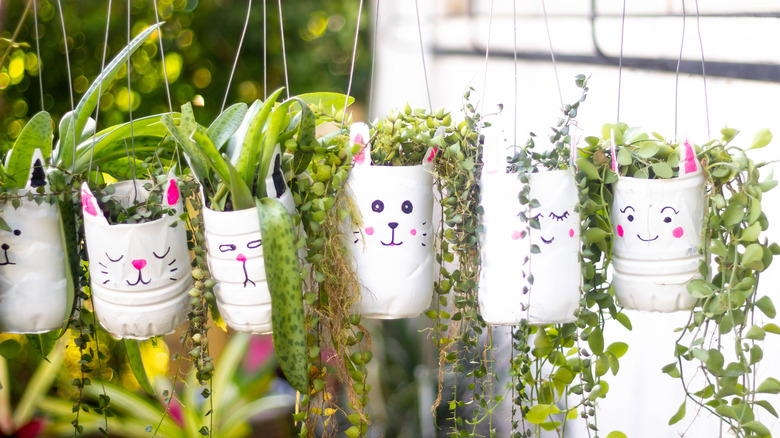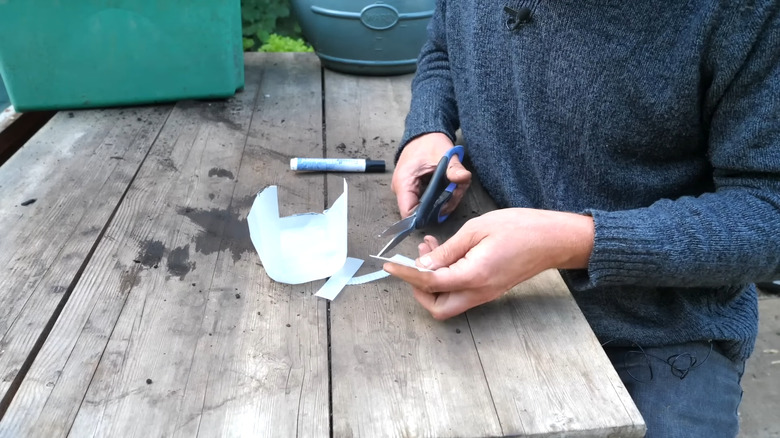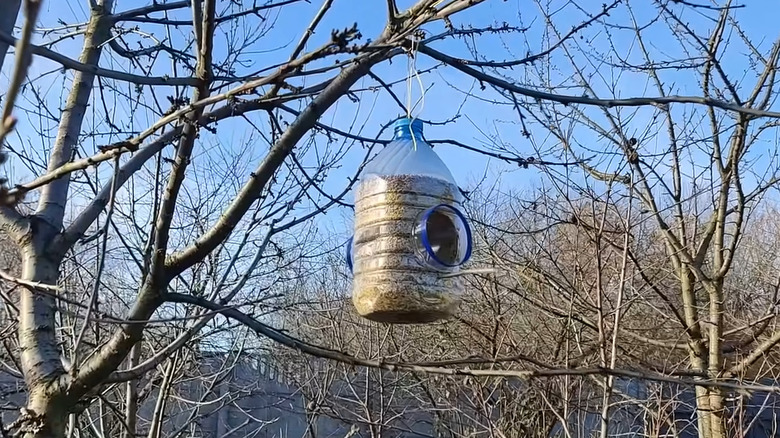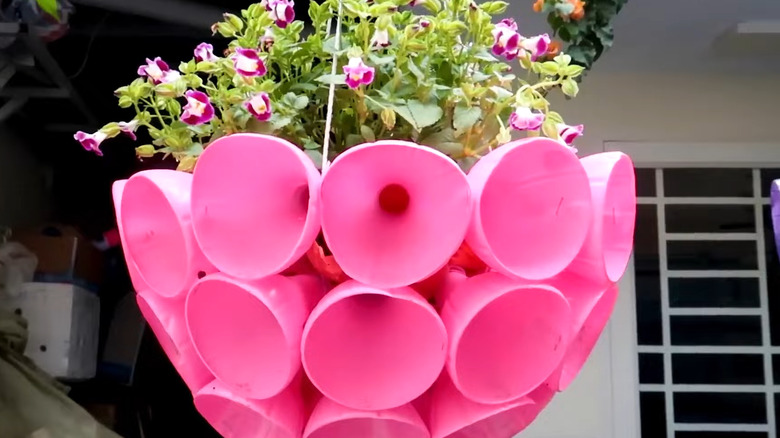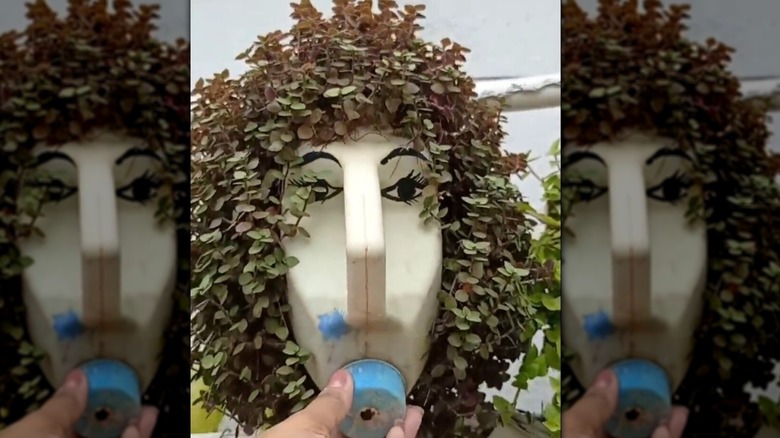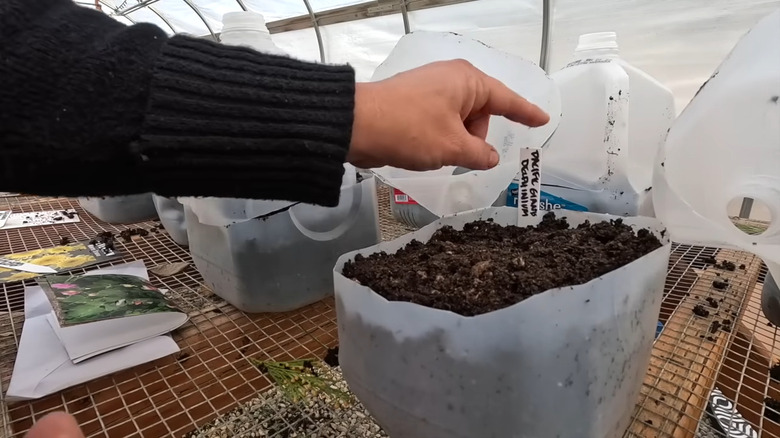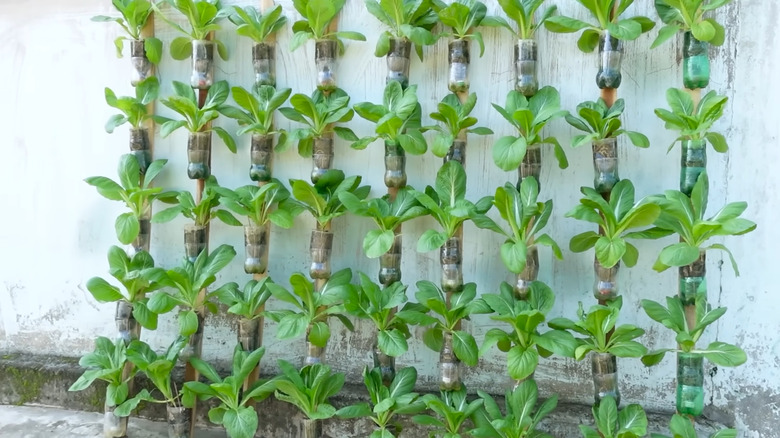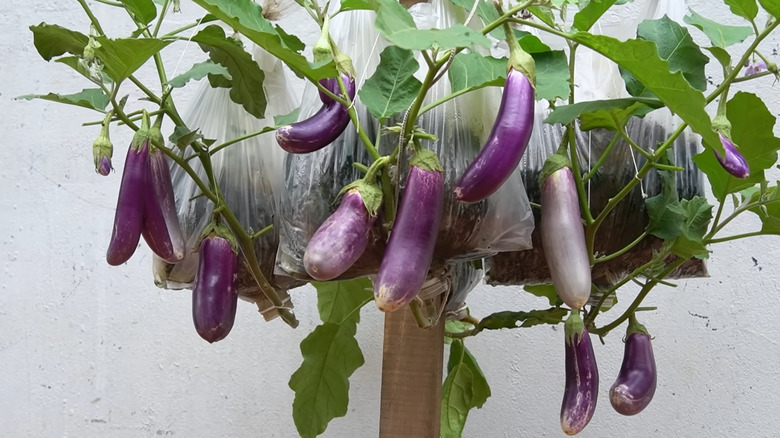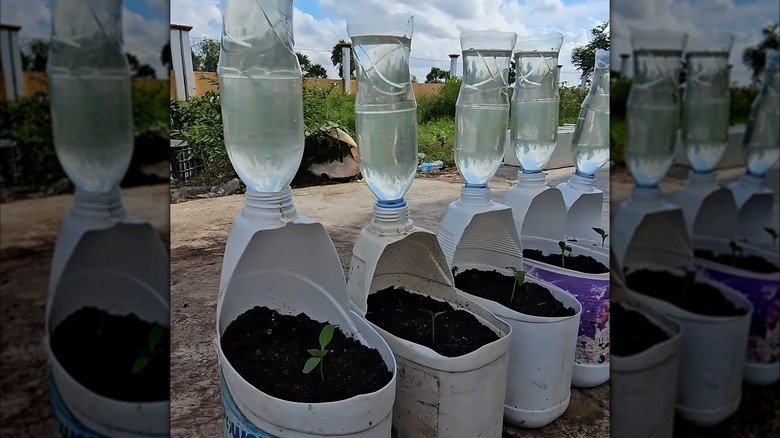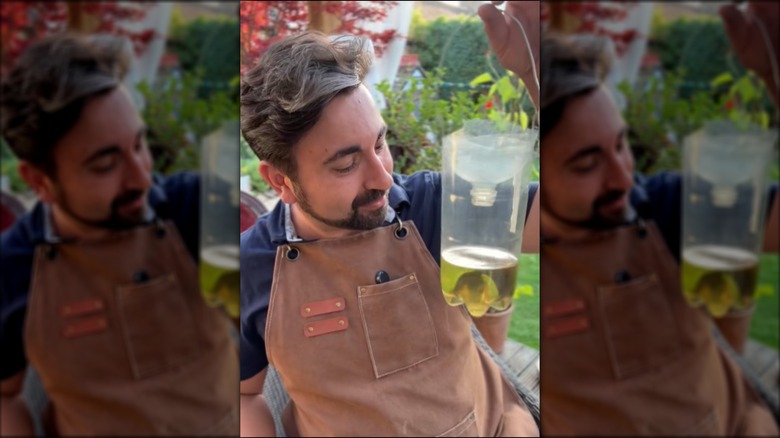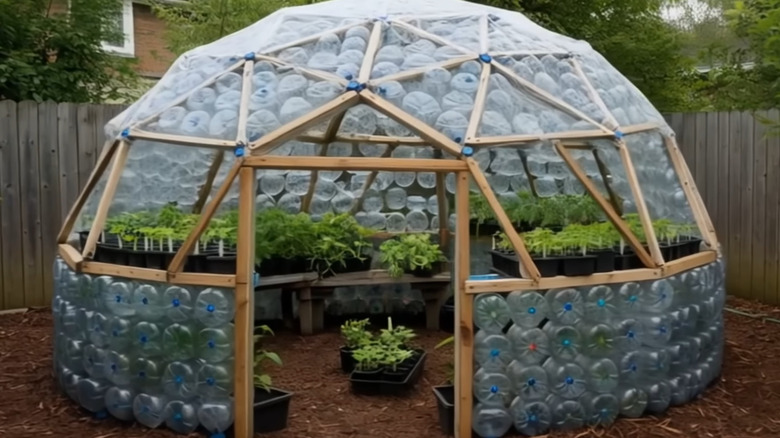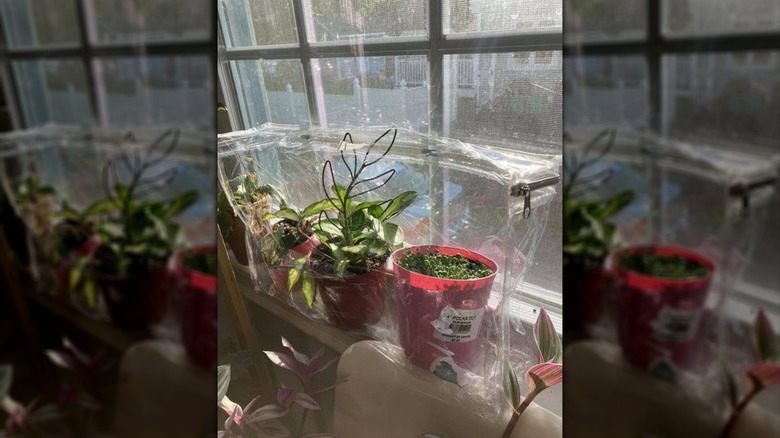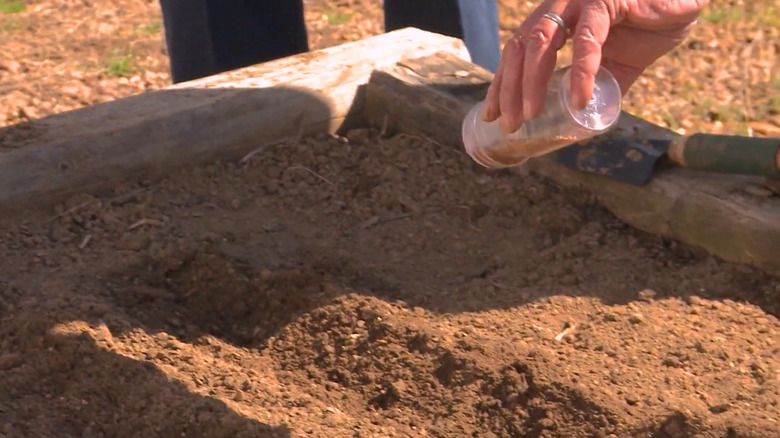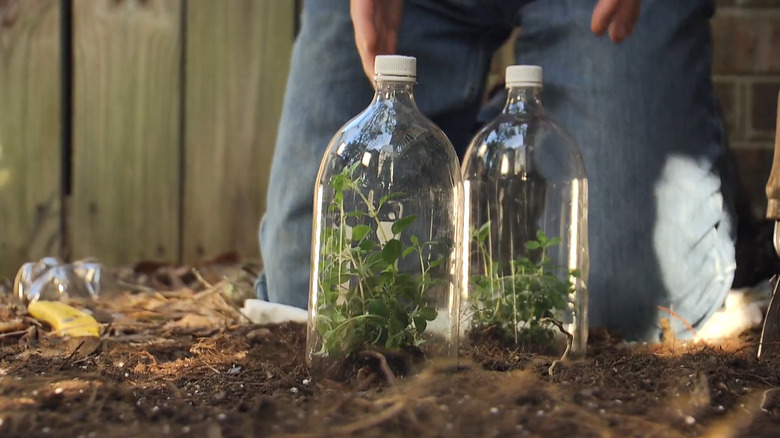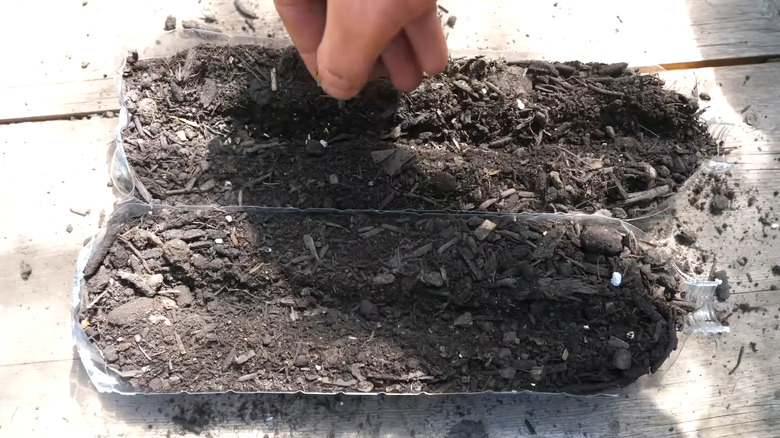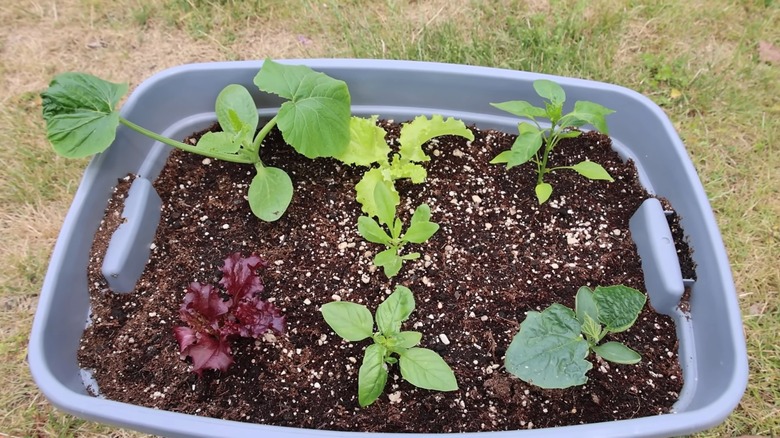25 Reuse And Recycle: Clever Ways To Repurpose Plastic In The Garden
We may receive a commission on purchases made from links.
The impacts of plastic pollution continue to leave many people feeling hopeless and dismayed about this alarming global crisis. Unfortunately, despite looming landfill issues and oceans filled with plastic, people around the world continue to produce 430 million tons of plastic every year. With most of our food packaged in plastic, it's basically impossible to eliminate plastic consumption. However, there are many ways you can recycle plastic items around the home as well as in the garden.
Even though the problem of plastic pollution is overwhelming, many continue to do their part by practicing the three R's: reduce, reuse, and recycle. With over 75% of plastic waste being sent to landfills, it's hard to see the impact of reusing plastic in everyday life. However, you have to consider that every time you reuse a plastic container, that means something else didn't have to be produced. For example, when you recycle a plastic bottle as a seedling cup, that's one less seedling container that needs to be produced.
Anyone interested in sustainable gardening trends has more than likely tried a few of these ideas, but it's always fun and inspiring to discover new practical uses for the plastic we already have. The next time you need a new item for your garden, whether it's a pot for a plant or a birdfeeder, consider reaching for something already in your recycling bin. With a little creativity and DIY supplies, everyday plastic containers can be transformed into useful garden materials.
Make a seedling waterer out of a plastic bottle
You can turn plastic bottles into different objects for the garden, starting with a seedling waterer. Since tiny seedlings need water delivered gently to the soil around them, you must use some type of watering device to achieve a light sprinkle. If you don't have a fancy one like the JUSUFU Watering Can for Seedlings, you can make one out of any plastic bottle with a lid. Simply use a push pin to poke holes in the lid, then fill it with water, and it's ready to go.
Cut plastic scraps into plant labels
Once you start upcycling plastic for your garden, you'll start to see normal, everyday plastic containers as treasures to use in various ways. While you're making different crafts for your garden from plastic, save the small scraps. They can be used as plant labels when you plant your seeds or to use in your garden when setting out plants. Garden labels made from common household items work just as well as TDHDIKE's 4-inch Plant Labels, which cost about $7, so you'll save a little money.
Use plastic mesh bags as melon support slings
Around the home, there are many different ways you can repurpose plastic mesh bags, like the kind that onions or avocados come in. For your garden, one of the easiest ways to use them is as melon support slings when you're growing watermelons and cantaloupes on a trellis. You can also use plastic mesh bags to hang soap by your outdoor sink or to store your own produce at the end of the season.
Make bird feeders from plastic water bottles
You don't need expensive bird feeders to attract songbirds to your backyard. Online, you'll find dozens of tutorials on how to make bird feeders from plastic water bottles. Whatever type of birdfeeder you choose to make, you can decorate, paint, and adorn it however you like. From small tube-style bird feeders to large suet feeders, plastic water bottles, and other products can be used in various creative ways to achieve this purpose.
Plastic bottle hanging planter
There are also many different ways to create plastic bottle hanging planters. Just like with bird feeders, you're limited only by your creativity and the number of plastic containers you have. Choose a fun theme and decorate a hanging planter made from a single water bottle any way you want, or put several of them together to create larger hanging baskets. As long as it has some way to hang and the container is strong enough to hold enough dirt for the plant and support its growing conditions, there are no rules.
Make unique planters from plastic laundry detergent containers
Laundry detergent containers are another plastic item that can be used in the garden in many ways. Because they are larger and made from heavy-duty plastic, laundry detergent containers can be cut, painted, and decorated to create sturdy planters. If you use some ingenuity, you can create unique designs like a lion with a mane of creeping plants or a human face with hair. Since the appearance of the planter changes over time as the plants grow, this is a fun experience to share with kids.
Reuse empty milk jugs for winter seed sowing
If you're winter sowing, then don't toss that empty milk jug; reuse it for a clever gardening hack. You can plant many types of plants with this planting method, and a milk jug is the perfect container. All you have to do is cut the jug almost in half, leaving the handle so that it opens like a clamshell. Fill the bottom with soil, plant your seeds, and tape the jug closed. Leave it outside during the winter with the lid off so it will stay moist from the rain.
Make a garden scoop from a plastic container
Gardeners need scoops for everything from potting soil to fertilizer, and you can make as many scoops as you want using plastic containers. This way, there'll be no shortage of plastic scoops, and you can have them in any size just by changing the size of the container you start with. The best containers for these scoops have handles, but you can simply cut a plastic water bottle in half to make a simple one. All you need is a marker and a utility knife to save another plastic container from landfills.
Create a vertical garden with plastic bottles
Whether you attach plastic bottle planters to a wood frame or use string to hang them in columns, you can create unique vertical gardens with plastic bottles. Use them to produce more vegetables in less space or simply paint and decorate the containers to add color and whimsy to your backyard. Some vertical gardens made with plastic bottles are designed to drip feed from the top down, which makes watering easy to automate.
Reuse plastic bags as planters
While you might not want to try this with those flimsy single-use grocery bags, if you live in one of the 12 states with single-use plastic bag bans, you may have some of the heavy-duty ones hanging around that you can use. Although this may not be aesthetically pleasing enough for your front yard, it can be a good solution in a greenhouse if you're trying to add more plants but don't have enough containers.
Craft a self-watering planter using a plastic bottle
Ingenious individuals have discovered several methods for creating self-watering planters with simple bottles. Some designs use small holes punctured in the lid of an upside-down water bottle, while others insert a Q-tip into the lid or use a cotton wick to soak up moisture from a vessel below. Whatever your design, this is an effective solution if you have to be away from your garden for an extended period and want to make sure your plants have all the water they need.
Make a trellised planter with plastic water cooler bottles
Before you throw away a large plastic water cooler jug, consider turning it into a planter. Those water cooler bottles come in various sizes, and the plastic is sturdy enough to easily attach a trellis to it. Just cut the top part, then poke some holes in the side using a hot metal tool, then use zip ties to attach a bamboo pole to the side of the container before filling with dirt. There are several container garden plants that need a trellis, including cucumbers, tomatoes, and morning glories.
Use plastic containers for DIY pest traps
From homemade wasp catchers to DIY slug traps, plastic containers of all different types can be used, including water or soda bottles in various sizes. You can save your money by making DIY wasp traps using a plastic bottle with a tube inserted into it for the wasps to enter. Then, add a string or wire so it can hang, and put some type of attractant in the bottle. Whether you choose a chemical or food attractant, put the wasp trap far away from your pollinator garden or flower beds to avoid harming beneficial insects.
Make a fruit picker from a plastic water bottle
Without an orchard ladder, it may not be possible to reach the fruit at the top of your tree, but with a fruit picker made from a plastic water bottle, you'll have no problem bringing in more of the fruit you worked so hard to grow. Take a long handle (like the kind used on mops or brooms) and use heavy-duty Wide Gorilla Tape to attach a plastic water bottle to it. Cut an oblong circle wide enough to grab fruit but with enough space to hold a few pieces at a time.
Build a greenhouse from plastic water bottles
Whether you're a teacher looking for a sustainable gardening activity for kids or a person who likes to experiment with recycled materials, building a greenhouse from plastic water bottles can be a team project. Choose whatever size you like, build a wood frame to support the water bottles, then attach them however you wish to make greenhouse walls. Instead of viewing water bottles as trash, if you see them as a versatile building material, you can use them for many projects like this.
Repurpose heavy duty plastic zippable cases for mini greenhouses
Another item that you shouldn't toss is plastic bedding bags. Instead, use plastic bedding packaging in the garden as mini greenhouses. In fact, many store-bought mini greenhouses, like the Shangxing Zipper Door Greenhouse, have zipper doors just like this. Whether it's to protect houseplants in a cold windowsill, to create a moist environment for starting seedlings, or to extend your gardening season at either end, a mini greenhouse made from plastic bed packaging allows you to promote plant growth by controlling the temperature in a small space.
Make seed or fertilizer spreaders from plastic containers
Imagine spending $20 on a Perszen Hand Held Seed Spreader, only to discover that you could have made your own from the plastic jug you tossed in the trash last week. For homeowners with small lawns and yards, handheld seed spreaders are all you really need for seeding and fertilizing. If you want a smaller seed spreader for finer seed, use a smaller container with tiny holes, or repurpose an empty spice jar to get the job done.
Reuse plastic containers as garden cloches
Gardeners will do just about anything to start putting plant starts out in the spring as early as possible, including saving old milk jugs and cutting them into DIY garden cloches to protect plants from late spring frosts. Sometimes, a repurposed milk jug is all you need to add a few extra degrees of warmth, making the difference between life and death for your small seedlings. For tiny seedlings, you can use soda or water bottles. Just be sure to take the cloches off or remove the cap during the day when it's hot.
Use plastic bottles for seedling trays
Reducing your usage of plastic means experimenting with different types of growing containers for your seedling starts in the spring. Anything that can hold enough potting mix so it's at least three inches deep can be used as a decent seedling starter, although many people make shallow takeout trays and plastic strawberry containers work for this as well. Another idea is to use plastic bottles as seedling trays. Simply cut them in half lengthwise, fill them with dirt, and plant your seeds. You can even use one half as a cover to keep moisture in.
Use empty plastic bottles with lids as pot fillers in your container garden
If you have large planters in your container garden, you know how heavy they can be when filled with dirt. One smart solution is to use empty plastic bottles with lids as pot fillers, especially for shallow-rooted plants like sedums and other succulents. For large containers, you can use 2-liter soda bottles. Some plants require more dirt, so ensure you don't reduce the amount too much in certain planters, depending on what you're growing in them.
Turn plastic storage totes into raised garden beds
Whether you need an insert for raised garden beds made from wood or you are simply looking for a large container to plant in, consider reusing plastic storage totes to DIY a raised garden bed. Plastic storage totes make excellent container gardens, and you can cover the outside with wood or bamboo to make them more aesthetically pleasing. This is a good solution if you know you have to move mid-way through the gardening season and want a portable container garden.
Reuse plastic forks as pet deterrent in your vegetable garden
As gardeners, we control the conditions in our garden as much as possible, but there are some factors outside our control. If you have pests like neighborhood cats or pesky raccoons digging in your flower beds, try the plastic fork hack that keeps animals out of your vegetable garden. By sticking plastic forks into the ground with the tines pointing up, you create an unpleasant experience for marauding cats and other four-legged creatures trying to wreak havoc in your garden.
Upcycle plastic protein powder containers into plant pots
Large plastic protein powder containers are often tubs with lids and scoops, perfect for use in the garden to store everything from diatomaceous earth to bonemeal. While cutting up a perfectly good plastic container with a screw on lid is questionable, you can also turn protein powder containers into plant pots. The plastic is sturdy enough to hold a nice shape and can be painted, decoupaged, or decorated to transform its appearance. This is a crafty project that can satisfy your creativity while saving you money on a new plant pot.
Store seeds in recycled plastic containers
Gardeners who hoard seeds at the end of the growing season know that you can store seeds in almost anything, including plastic containers like pill bottles and ibuprofen containers. While every gardener has their own method and way of organizing their seeds, if you want to extend the shelf life of your seeds, you can seal them tightly in a plastic container with a large lid and put them in the freezer.
Use recycled plastic containers to grow catgrass
Catgrass isn't actually a type of grass; it's really a blend of seeds that produce grass that cats like to eat. Species like oats, wheat, and rye grass grow quickly and can be given to your cats to satisfy their desire for greenery. Many people shop in the produce section for catgrass, but you can easily grow your own in just a matter of days, using recycled plastic containers and NatureZ Edge Premium Cat Grass Seeds. This is a good way to reuse plastic strawberry containers or takeout trays.
